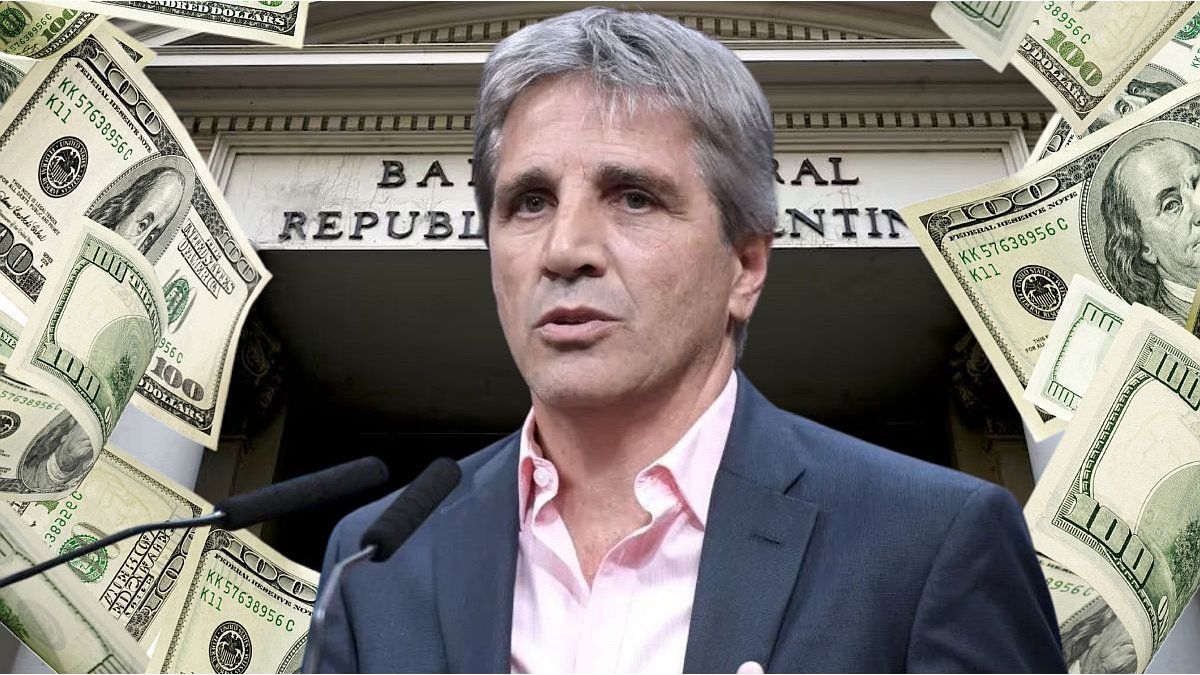The climb of dollar In Argentina, with an increase that already exceeds 10% since mid -June and has taken it above the $ 1,300has put the decisions of the economic team in the center of the debate.
It is known that the lack of accumulation of reservations -among other factors- They have fogoneted in recent weeks the bunder impulse of the dollar. However, over the days it begins to be clear that there is more. For some analysts, this exchange pressure is a consequence of a serious analysis error, linked to The elimination of short -term liquidity letters (Lefis)a measure that unleashed instability in the financial market. This “non -forced error” adds to the previous – and subsequent- indications of economists such as Carlos Melconian, Diego Giacomomini, Marina Dal Poggetto, and Emmanuel Álvarez Agis, among many others, who highlight the structural tensions of the economy.
The spearhead of the race for the dollar
The central fact is that the exchange rate has shown a bullish behavior sustained during the last month, a phenomenon that contrasts with the record income of the agricultural sector, which liquidated about US $ 2,000 million in the first week of July, according to data from the Central Bank. This volume, one of the highest in years, It should have mitigated the pressure on the dollarbut the rise persists in a context of downward inflation – but dependent on the exchange rate – and levels of poverty that affect 40% of the population.
Related to the latter, he was the economist Juan Manuel Telechea who identified the movement that seems to have generated a certain exchange rate and that puts the focus on the first decision of all, that is, the elimination of the Lefis. According to the economist, the economic team decided to suppress short -term liquidity letters (Lefis)instruments used by the Central Bank to absorb excess weights in the financial system.
This measure, taken at a time of growing pressure on the exchange rate, generated a significant increase in available liquidity (banks chose to stay liquids). In the analysis, this decision would have “destabilized” the market to encourage the purchase of dollars as a refuge of value, exacerbating the demand for foreign exchange. The elimination of the Lefis, designed to maintain attractive interest rates and control liquidity, resulted in an excess of weights that fed the exchange pressure.
On the other hand, the increase in liquidity derived from the suppression of the Lefis caused a drastic reduction of interest rateswhich fell to levels close to 18% per year, according to market estimates. This decrease caused the instruments in pesos, such as fixed deadlines and bonds, to lose competitiveness in the face of the expectation of a devaluation. As a result, the economic agents redirected their funds to the dollar, intensifying the pressure on the exchange rate in an already vulnerable context.
Second level maneuvers: You can fail
But the part of the lion is this. To counteract the mismatch, the Central Bank was forced to intervene, contradicting the official non -interference discourse in the markets. The monetary authority offered “passes” to banks at a rate greater than 36%, significantly above the market, with the aim of stabilizing interest rates and reducing the demand for dollars. In addition, it intervened in the futures market to contain the escalation of the exchange rate. This action, although necessary, implied a high fiscal cost and presented the contradictions of a strategy that promised market freedom.
The result of this process was a unnecessary monetary policy and a questioning of the coherence of the economic team. Telechea points out that the government had to resort to expensive measures to correct an error that could have been avoided with a more precise diagnosis.
Along these same lines, other economists have also argued that the underestimation of the dynamics of the exchange market in a context of high inflation and limited reserves reflects a lack of precision in the execution of economic policies. Marina Dal Poggetto, Director of Ecogo, has indicated that the exchange delay, combined with a lax monetary policy -and previously analyzed -has contributed to the increase of the dollar.
Carlos Melconian He has been critical of the management of the exchange rate, arguing that the government has not found a “free and floating floor” for the dollar, which aggravates exchange volatility. “The lack of accumulation of reserves and the absence of a solid agreement with the IMF limit the capacity of the central bank to stabilize the market. The government is using excuses, but has let the dollar rise,” he said, noting that the intervention in the futures markets reflects a more than planned reactive strategy.
Emmanuel Álvarez Agis He has also criticized the strategy of maintaining a “ironed” dollar, comparing it with previous policies that led to mismatches. “The exchange delay is evident and that the Government has” little margin “to sustain it, since the lack of accumulation of reserves complicates the exit of the stocks. If the dollar is accommodated near the roof, inflation will rise and the activity will fall,” he warned, highlighting the contradictions between libertarian discourse and market interventions. Diego Giacomomini He described the rise of the dollar as a “chronicle of an announced death”, the result of a “dynamically inconsistent” monetary policy.
For the mentioned analysts, the dollar rise is not an isolated phenomenon, but the result of decisions that reveal the difficulties of the economic team to calibrate its measures. In the gaze, the elimination of the Lefis amplified the exchange pressure and forced the Government to resort to interventions that contradict their non -intervention speech. This “non -forced error” highlights the complexity of managing monetary policy in a context of inflation, shortage of reserves and growing social uncertainty.
Source: Ambito




